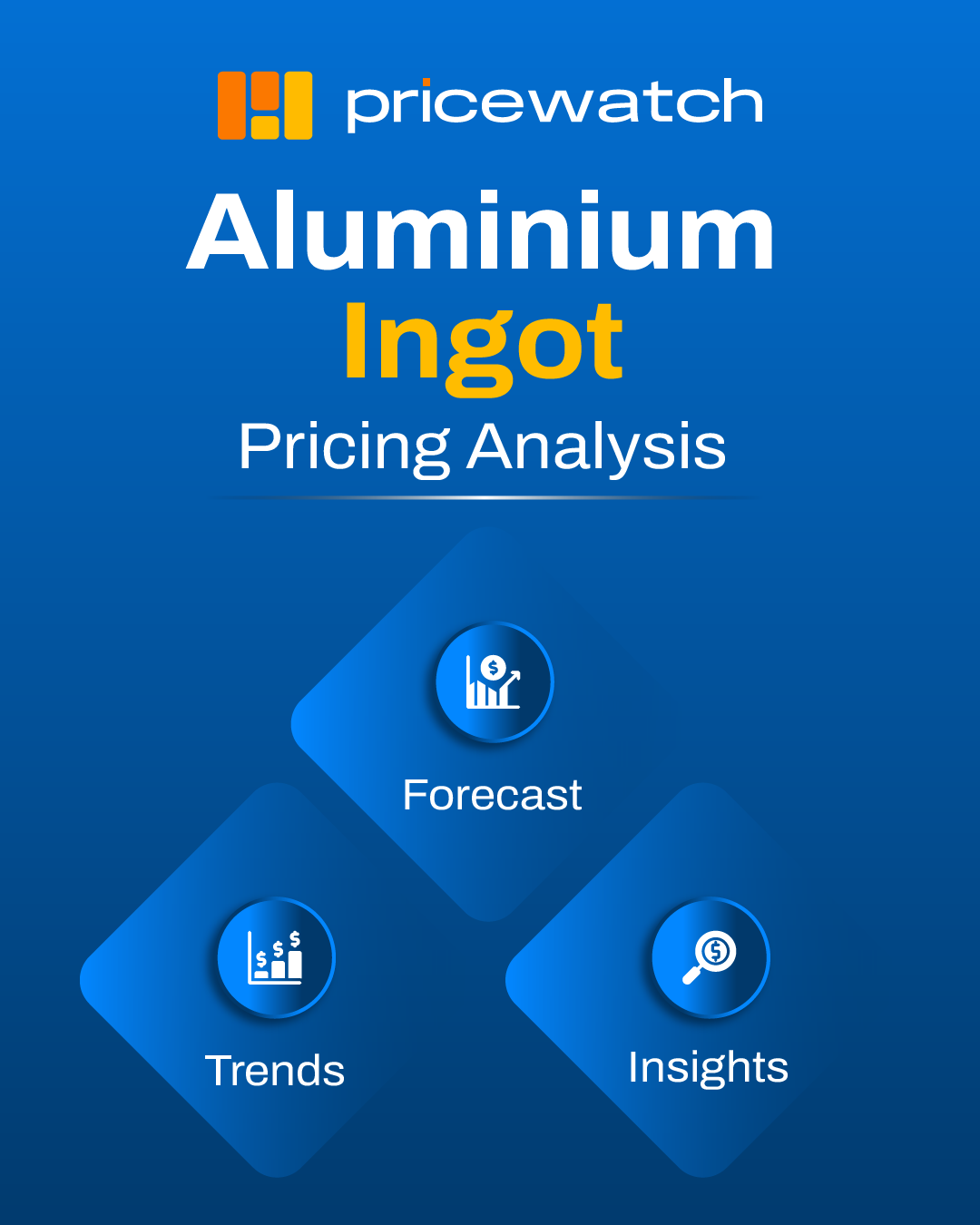Aluminium is one of the most widely used metals in the world found in everything from cars and airplanes to buildings, cables, and kitchen foil. But like any commodity, its price can shift with changes in demand, supply, and global trade conditions.
In the second quarter of 2025, aluminium ingot prices fell once again. According to PriceWatch, the average price dropped by 2.69%, settling at $2,717 per metric ton FOB Shanghai. This continues a trend of price softness that’s been seen across several recent quarters.
So what’s driving this decline? And what might lie ahead for the aluminium market? Let’s break it down in simple terms.
Understanding Aluminium Ingots
Before diving into the trends, it helps to understand what aluminium ingots are. These are large blocks of raw aluminium that can be melted down and processed into various products — such as sheets, rods, cans, and car parts.
Aluminium ingot prices are considered a benchmark for the aluminium industry. When ingot prices fall, it usually signals that demand is slowing, supply is outpacing consumption, or both. This can ripple across many industries and economies.
Key Reason for the Decline: Weak Demand
One of the main reasons aluminium prices dropped in Q2 2025 is weaker demand from key industries, especially electric vehicles (EVs) and construction.
⚡ EV Industry Slows Down
The EV sector was once expected to be a major growth engine for aluminium, as lightweight metals are crucial for electric car efficiency. But EV production has not been as strong this year as many had hoped. Whether due to economic conditions, slowing consumer interest, or high battery costs, demand from this sector hasn’t picked up.
As fewer EVs are produced, less aluminium is being ordered, leading to lower prices.
🏗️ Construction Activity Still Lags
Another big consumer of aluminium is the construction industry. Aluminium is used in window frames, cladding, roofing, and infrastructure. However, many construction projects have been delayed or scaled back in recent months due to rising borrowing costs and cautious investor sentiment.
This means that builders and developers are buying less aluminium — which adds to the overall market slowdown.
Trade Tensions Add More Pressure
Apart from weak demand, aluminium prices are also being weighed down by uncertainties in global trade, especially involving the United States.
Under Section 232, the U.S. has maintained higher tariffs on imported aluminium. These tariffs were designed to protect domestic manufacturers, but they’ve also made it harder for international producers — including those in China — to sell aluminium to the U.S. market.
As a result:
-
Export demand for aluminium has weakened.
-
Global buyers are being more cautious.
-
Some producers are struggling to find alternative markets.
This has left more aluminium sitting in warehouses, further increasing supply and pushing down prices.
For latest updates, price queries, demand forecasts, and supplier information related to aluminium ingot prices, submit your request here: https://www.price-watch.ai/contact/
Inventory Build-Up is a Concern
When demand slows and exports stall, but production continues, the natural outcome is a build-up of inventory.
And that’s exactly what’s happening now. Aluminium stockpiles are growing, and this oversupply is putting downward pressure on prices. With buyers in no rush and producers sitting on excess material, prices have little room to rise in the short term.
Producers Are Under Pressure
For aluminium producers, the current market is difficult. Lower prices mean thinner profit margins, especially for producers with high energy and raw material costs.
If these price conditions continue, some companies may need to:
-
Reduce production levels
-
Delay expansion plans
-
Cut operational costs
Without a meaningful improvement in demand or a shift in trade policies, producers may have to operate more cautiously in the second half of the year.
Buyers May Benefit — Cautiously
On the flip side, manufacturers and industrial buyers might find some relief in the lower prices.
Companies in automotive, packaging, consumer goods, and construction that rely on aluminium can take advantage of reduced material costs, which could improve profit margins or help them offer more competitive pricing.
But even buyers are being careful. With so much uncertainty still in play — especially in trade and demand recovery — many are holding back on large purchases, waiting to see if prices drop even further.
What Could Change the Trend?
Looking ahead, several key factors could influence whether aluminium prices stay low or begin to recover.
✅ 1. Recovery in Demand
If EV production picks up again or construction activity rebounds — perhaps due to new infrastructure spending or housing initiatives — we could see a return of stronger aluminium demand.
✅ 2. Trade Policy Shifts
Any changes to U.S. tariffs or international trade agreements could re-open some markets and improve export flows, helping stabilise global aluminium prices.
✅ 3. Production Cuts
If producers start intentionally reducing supply to avoid further oversupply, this could balance the market and help lift prices.
Outlook for the Rest of 2025
Right now, the aluminium market is in a wait-and-see phase. The price drop in Q2 2025 reflects soft demand and global uncertainty. But the situation isn’t irreversible.
There’s still long-term demand potential for aluminium in areas like:
-
Electric vehicles
-
Renewable energy infrastructure
-
Green construction
-
Lightweight packaging
If those sectors gain momentum later this year, aluminium prices could start to recover. But if demand stays flat and exports remain limited, producers may face more months of difficult pricing conditions.
In Summary
-
Aluminium ingot prices fell by 2.69% in Q2 2025, to $2,717/ton.
-
The decline is driven by weak demand, especially from EV and construction sectors.
-
Trade tensions and tariffs are limiting exports and weighing on global sentiment.
-
Inventory levels are high, and producers are facing growing pressure.
-
Buyers might benefit from low prices, but most are being cautious.
The aluminium market, for now, remains under strain. But as always, changes in global policy, industry momentum, or market behavior could shift the balance in the coming months.



